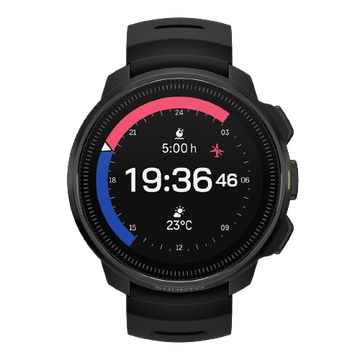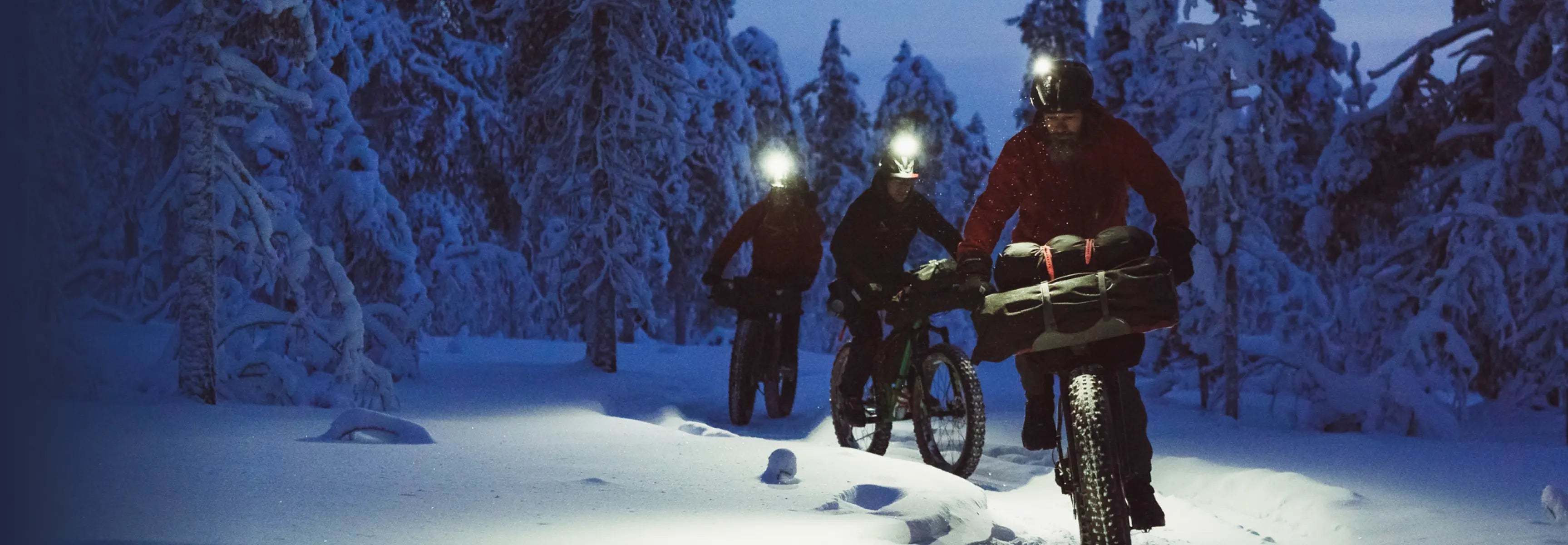
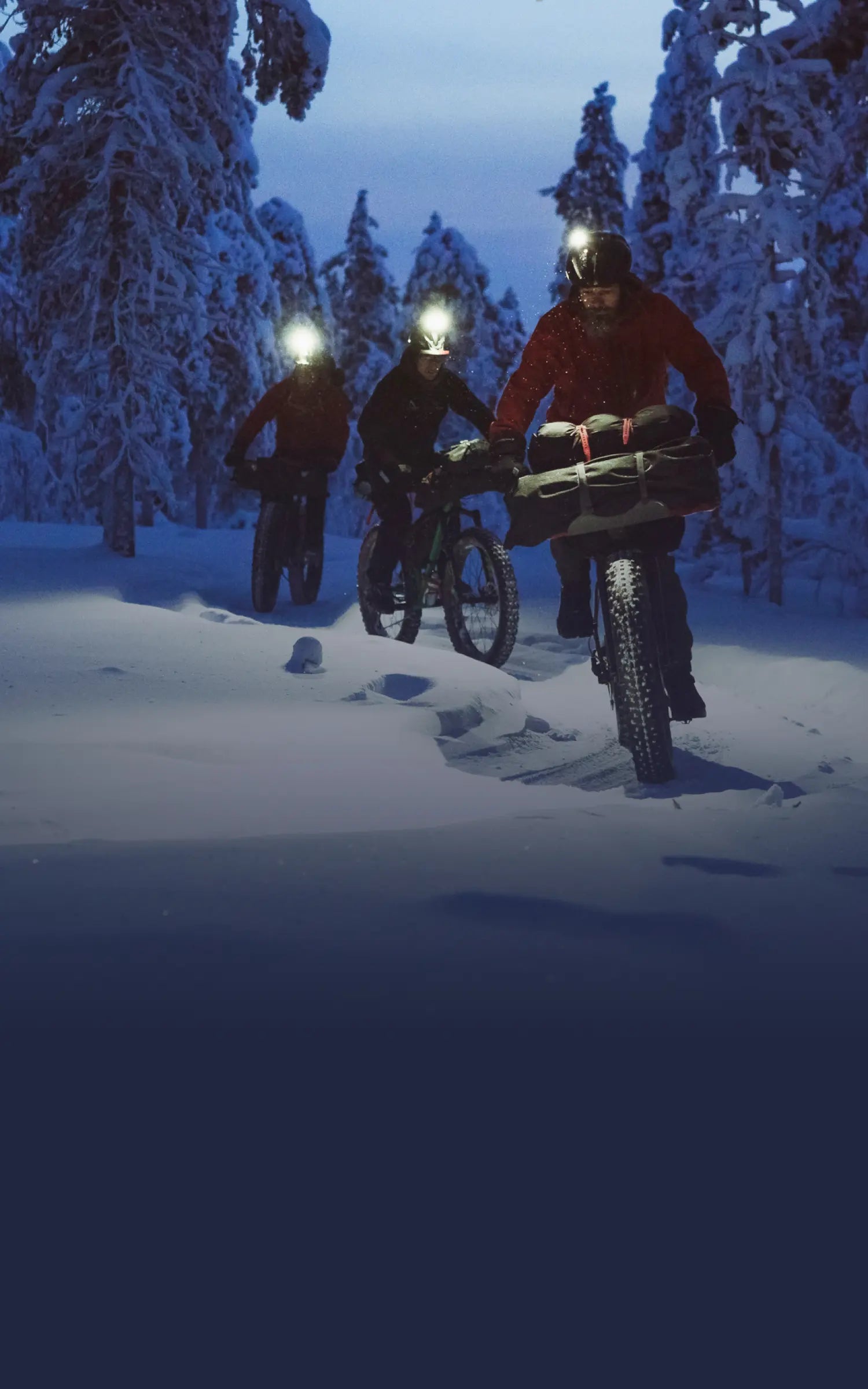
Suunto Blog
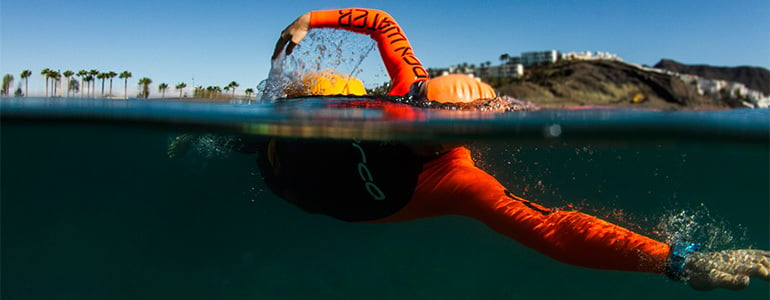
7 spring training camp tips for triathletes
Top triathlete Åsa Lundström shares 7 tips to help you get the most from your spring training camp. © OrcaSuunto athlete Åsa Lundström has been putting in 35-hour training weeks at a spring training camp at the Playitas Resort on the Canary Islands. She came fourth at the recent South Africa Ironman, qualifying herself for the World Championship in Kona, Hawaii this October – her main goal this year. Åsa says going to a spring training camp somewhere warm allows people from colder climes to boost their training volume to prepare for the coming season. “Most long distance triathletes have the Kona Ironman as their main goal and in order to elevate our base level we need to have a big training block and a spring camp is a really good way to achieve that,” Åsa says. “Most triathletes want to boost their cycling at spring camps because that's the hardest discipline to train at home during the winter months.”© Orca
Don’t overdo it
When you’re at a camp there are so many motivated people and groups it’s easy to get carried away. If you plan to start out with a three-hour ride and you go with someone who wants to do a four or five hour ride, it's very easy to get pulled along with them. Unsurprisingly, it’s not uncommon for people to train too hard and crash their immune system and then go home, catch a cold and not be able to train for two weeks. Being patient and not getting carried away is probably the hardest part of being on a camp.© Orca
Stick to your plan
Create a training plan for the camp with your coach before you leave so you have a clear idea of what you’re going to do. This helps you to avoid overdoing it. Of course if you feel fresh and you feel strong it’s important to push a bit harder. You need that to stay motivated and to get the endorphins. But still don't get carried away and overdo it. The risk is you will hit the wall.
Rest and eat well
Most people train a lot more at a camp than they do at home. They go to boost their training. It's important to remember then that you need more sleep and to take good care of your nutritional intake by eating good quality food. At the beginning of a camp you are so filled with endorphins and energy and you’re in the warm sunshine, it’s easy to feel like you don’t need so much sleep. Even if you’re only on a one-week training camp it’s important to get eight or nine hours of sleep every night even when you feel you don’t need it.© Åsa Lundström
Take your nutrition
If you’re going to a training camp where you haven’t been before it can be difficult finding the sports nutrition you use for your training. So if you don't know what you can get there, make sure to bring enough of your own.
Find a buddy
Training with a buddy, or even just around other triathletes, means you can push yourself to a higher level. If you train for many hours it’s always good to have a partner. If you have someone who is at your level, it’s a constant source of motivation because you will be racing against these people.
© Åsa Lundström
Foam roll and stretch
I go to the gym to workout, stretch properly and do foam rolling. I do it as prevention. A light massage half way through a camp is a good thing. Avoid deep massage because that can make your muscles sorer and they might need a rest afterwards.
Focus on volume
Most people go on a spring training camp because they can’t get the volume in at home because it’s too cold. So the natural thing is to do the volume training, which is cycling and running. Take the opportunity to do longer sessions. It’s also a good time to practice open water swimming if you’re somewhere where the water temperature is nice. Don’t focus on technique, but build strength and practice navigating.
Lead image: © Orca/Gines Diaz

How to use the power of commitment
Elite South African trail runner and Suunto athlete Meg MacKenzie also works as a coach, helping runners to develop the mental skills required to achieve their dreams. She writes below about drawing on the power of commitment.© Sven Musica
As the trail running season gets closer runners sometimes overcommit to too many events or don't fully commit to any. Both result in half-hearted goals that may or may not be reached. My advice is to think carefully and commit to one or two really important goal races with 100% whole heartedness. Here’s how!
IMT (inspiring, moving and touching)
Choose an event that is inspiring, moving and touching. Choosing an event to commit to 100% requires that it’s an exciting for you. Otherwise your discipline is bound to waver; you will begin to look at other races. Choose wisely and dream big! Make sure it is out of your comfort zone by about 20%. More than this and you may be overwhelmed. Less than this, and it’ll be too easy.
Click to read Meg's tips on how to bring mindfulness to the trail!© Sven Musica
Use the power of speech
There is very real power in our words when we talk with others. We have the ability to create what we desire through our word by using it as an action. A speech act is a verbal declaration of what one is committing to, and by when. For it to be effective, it should be a clear, strong and specific commitment:
“I promise to …” “I commit to …” “I shall …” Avoid weak sentences: “I’ll try…” “I want to …” “I would like to …” Whatever you verbally commit to must be followed by a clear goal about by when it will become a reality. For example: “I commit to running a sub 3h30m marathon on October 12, 2016.” This is much clearer, and more specific than: “I’ll try to do my best at the marathon.” Another good example might be: “I will lose 3kg by May 30 this year” as opposed to: “I’ll try to lose weight.” Be specific!
© Sven Musica
Take responsibility
As people, we constantly try to find reasons as to why things happen to us. Perhaps we keep getting injured, and we look for something to blame. Or our running buddy keeps bailing and then we feel our lack of fitness is his or her fault. The more A type personalities out there might find a convenient reason to justify why they didn’t stick to a rest day. The list is endless! It’s crucial to simply accept and take responsibility for your actions, whatever they are. When you can do this fully, imagine the power your commitments have!© Sven Musica
Watch the little things
Your subconscious mind is a super powerful recording device that remembers all the times you have or haven’t done what you said you would do. It doesn’t record the excuses, and whether they are legit or not. If you promised to go to gym at 6am but you press snooze and go at 6.30 this is recorded and your integrity is compromised. Likewise, if you promise to meet a friend for coffee at 11am and you get there at 11:05, it’s recorded as a time when you broke your word. These add up and impact your overall integrity or character. The gist is, how can you expect yourself to reach your BIG goals if you cannot trust yourself with little ones? They are directly related, so keep a check on your integrity. It’s the fuel behind the power of your word.

How to bring mindfulness to the trail
© Sven Musica
With her mother, father, and aunt all distance runners, it was inevitable Meg MacKenzie would follow suit. She grew up on a farm, and enjoyed cross-country through her school years. When she was 25, and without training, she came second in the Three Cranes Challenge stage race, and was first in her age group. “From there I started thinking about trail running more seriously,” she says.
She began working with a coach, got sponsorships and has since had a string of podium and first place finishes in stage and trail running races. Her specialty is mid-distance racing.“I don't know what it is but I keep entering those shorter, sharper races,” she says. “You can race more if you do the 30 k to 40 k distance. And I love racing. That's part of why I do it. I crave competition.”Meg also coaches other runners to reach their dreams. She practices meditation daily and uses mindfulness in her approach to life and coaching. “I've had a lot of experience in the trail running community and “I can see that women in particular struggle to get started, and if they do get started they struggle to maintain what they're doing,” Meg says. “That spurred me to help people, particularly female runners.”Many trail runners rely solely on mental toughness to push themselves, but there are other ways of approaching training and racing. “Listen to your body and really try to get a mind-body connection going because that's the most important connection you can have. Pushing through isn't always the best option.”
Meg's three tips for bringing mindfulness to the trail:
Create your context for each training session
By consciously determining what you want to get out of each session, you will avoid tumbling along in an unconscious blur of day-to-day slog. It takes five minutes, and when you get better at it, one minute. Before you step out the door ask yourself what you want to get out of the next few hours. Maybe it’s an escape after a long day. Maybe you want to learn more about your downhill running. Perhaps you need to relax and take it easy. Or maybe you want to consciously push yourself to the correct splits and times you laid out for yourself. Whatever it is, take a quiet moment to determine it consciously before you set off.
Forgive yourself
Forgive yourself for any training or racing that didn't go how you wantedAcknowledge what happened, give up the resistance to what happened, let go – it creates freedom. And make a decision to move forward. This will allow for more flow and energy rather than getting stuck in one off day, week, month or race.
Drop the story
The story is everything we create in our heads about the present moment and most of us allow that to stop us. For example, you would like to go for a run BUT its a bit rainy and cold, you don't have quite enough time, you really want to BUT maybe you could go tomorrow when the weather is better, or when you get out of work a bit earlier. The story is everything after BUT.
The 'is-ness' is that, yes, it is rainy and cold. And you have promised yourself to go for that run. So what is your decision? If you act from is-ness, you acknowledge that it is cold and rainy and you make a decision to go anyway because that is the best decision to make out of what IS. So drop the story and move on in the present!
Meditate
Meditation is a powerful tool to use before or after a race or as part of your daily life. It allows you to create space in your mind and be more present. This, in turn, allows more flow, as you will be more conscious with the present moment, instead of rushing through another day of training stuck in the future worrying or feeling anxious about the past. There are lots of guided meditations out there, try one, start small and just be.
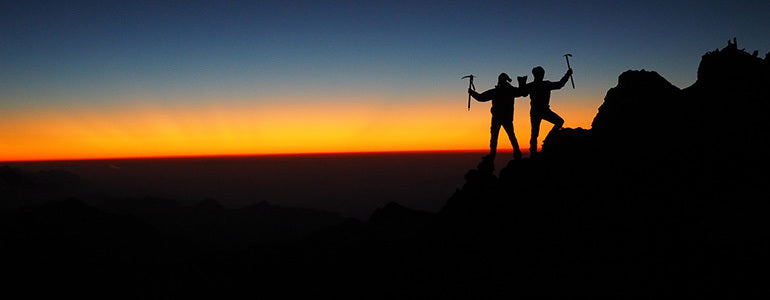
Meet the first guy scaling all the 7 summits – from sea level
High school teacher Dave Williams is attempting to become the first person to scale the highest summits of the seven continents by starting at sea level and running to each mountain.
Dave on his hike from the Black Sea to Mt Elbrus in Russia. © www.sea2summit7.comWhen Dave Williams isn’t teaching at a high school in Auckland, New Zealand, he’s doing one of two things: running or eating. “I run a half marathon in morning and a half marathon in the evening, which has made the necessary training feasible while working full time,” Dave says. “Keeping the weight on has been hard even though I eat eight meals a day.”
On the summit of Kilamanjaro. © www.sea2summit7.comDave has completed sea to summits on the highest mountains of four continents – Aconcagua, Kilimanjaro, Elbrus and Kosciuszko – and is about to set off to Alaska for a five-week expedition to make his attempt on Denali – the highest mountain in North America. Starting on April 19, he will run 350 km from Anchorage to the road end. “It will take five marathons to run to the road end, then a three day trek to the base of the glacier, then a nine day trek up the glacier to the base camp, then another two weeks to the summit,” he says. “One of the biggest challenges I've faced during preparation is to build the required fat and muscle stores while simultaneously increasing my fitness and running over 100 km per week. I predict I will lose up to 10 kg during the five weeks of adventuring.”
On the way to the summit of Aconcagua. © www.sea2summit7.comLater this year he will be heading to Antarctica to make a sea to summit attempt on Mt Vinson. He’s saving the best to last, however. In 2018 he will begin running from Kolkata, India, doing 32 marathons in 30 days, to Everest base camp and then climb the highest mountain in the world. “I enjoy climbing more than the running,” he says. “Running is more repetitive. “When I start running I know I’ve got the best to look forward to. The finale is the climb.” The 30-year-old outdoor education teacher began his Sea2Summit7 project in 2013 after two friends committed suicide due to long battles with depression. The loss got him thinking about depression and what he could do to help. “I had an epiphany while doing a sea to summit adventure in New Zealand,” Dave says. “I thought I could do same thing on the 7 Summits and raise money for the Mental Health Foundation.”
Success at last! © www.sea2summit7.comHe’s raised $5,400USD so far and, incredibly, has paid for most of the project out of his own pocket, investing $50,000NZD ($34,000USD) until now. The first mountain of the project, Aconcagua, was the most difficult. He failed twice. On the first attempt in July 2014, a storm hit on his summit attempt and climbers he had met earlier died on the mountain. On the second attempt his body gave out on the climb and he had to call it off. Finally, in January 2016, everything came together and he summited Aconcagua. “The thing that always keeps me going is receiving personal messages from people who have been following the project and who say I’ve inspired them to get off the couch,” he says. Dave hopes he has to run to Denali only the once. “Sea2Summit7 is all about never giving up and calling on friends to help when you are feeling fragile," Dave says. “This time I have an awesome expedition team of five who will be fulfilling specific roles along this journey so it is feasible and safe.”
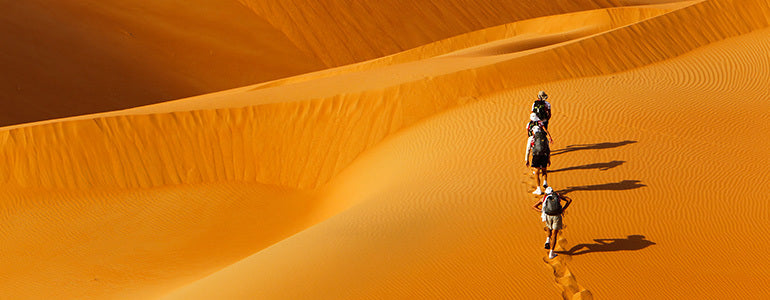
Leadership lessons from an adventure-racing champion
Nathan Fa’avae is the captain of Team Seagate, a world champion adventure racing team. He knows both sides of endurance sport – individual and team competition – but is renown for his ability as a team captain. We caught up with the New Zealander to find out what it takes to build a winning team. Adventure racing has taken Nathan around the world. © Nathan Fa'avaeWhite-water and sea kayaking, climbing, caving, orienteering, trail running, trekking, road cycling, mountain biking, ski touring – Nathan Fa’avae does it all. If the lifelong adventure junky isn’t doing one of the above, he enjoys taking his children on adventures in New Zealand’s stunning wilderness. The 43-year-old has been a semi and full time professional athlete for 16 years and competed in 12 world championships. Remarkably he has done so while battling a heart condition that he’s had surgery for three times. His role as the captain of Team Seagate, which dominated the adventure-racing scene for years, has earned Nathan wide respect as a leader. Any big races in 2016? I’m not sure what racing I’ll do in 2016 and beyond, if any. I’m always fit and active, I love the sport but I’ve done a lot of it. I’m an adventurer so that’s a lifestyle for me, not something I’ll stop doing.
Team Seagate has one multiple adventure racing world championships. © Nathan Fa'avae
Why do you enjoy about team competition?
With the team racing I like the fact we battle together, as a stronger united force. It’s nice to be on the start line with friends and know we’re in this thing together. I get strength and courage from that. How do you see team versus individual competition? As an individual you can control your pace to suit, if you want to ease up, go harder, whatever, but in a team you’re dictated by the speed of the team. The support and camaraderie of a team often makes the major challenges more enjoyable and achievable.
Nathan has paddled in 15 countries and many exposed situations. © Nathan Fa'avae
How do you manage with team dynamics? As a team captain, accommodating and nurturing people to get the best out of them is an important role. My strength in captaining teams is communication and composure. I place high value on open communication and not sweating the small stuff. I try to see everything in a positive light and always look for solutions to problems.
Cross-country mountain biking was his first competitive sport. © Nathan Fa'avae
How do you choose your teammates? Building a team is about matching people who will add value to one another’s skill sets. Team work and unity spirals up if you get that mix right, blending together like-minded people with similar attitudes. It’s important we enjoy being together, socially and competitively. For me personally, I tend to only race with people I truly consider friends, people I respect and trust. That’s how I choose my teammates.
Part of adventure racing is dealing with the unknown – how do you deal with that?
I think our team has always dealt with the unknown because we always expect it. In adventure racing, the thing you have not planned for is going to happen, so you need to be flexible and adaptable, roll with things and not get worried and stressed. My motto is ‘nothing can shock me’, that means when we get last minute surprises, they’re never actually a surprise.
© Nathan Fa'avaeDo teams make better decisions in the outdoors or individuals? There’s no hard and fast answer to this question. From my experience, I feel safer in the outdoors on my own. I know my limits and capabilities and act accordingly. The close calls I have seen were in groups when group culture meant they did something dangerous they wouldn’t have done as individuals. People do tend to show off in front of other people and subsequently take more risks.
World Vertical Week 2016 Big Data
It was a race to the top! National and tribal pride was on the line as people around the world tried to prove their country or sport is king of the hill. World Vertical Week 2016 has closed and the stats are in so it's time to see who came out on top!
WHICH COUNTRY CLIMBS THE MOST?
Surely alpine nations have an unfair advantage? Mostly, yes, but not always. There were a couple of surprises! This visual shows the top 10 countries for average ascents in human powered outdoor activities.
Congratulations Switzerland, Austria and Slovenia!
WHO CLIMBS THE MOST?
Trail runners, cyclists and trekkers were humbled as – maybe unsuprisingly – ski touring and mountaineering led the highest average ascents. As a consolation, remember there would be very different results in summer!
Skiers climbed the most
NUMBER ONE CLIMBERS IN THE WORLD
The Swiss are on top again and nearly breaking the thousand-meter mark in both ski touring and mountaineering. The other two countries with two first places were more surprising: Colombia was on top in running and cycling and Hong Kong topped the chart in both trail running and trekking.
The toughest mountain goats come from the Switzerland.
TOP COUNTRIES IN DIFFERENT ACTIVITIES
And to give you even more to speculate here are the top five countries in the activities mentioned above.
Top 5 in ski touring
SWITZERLAND 996 m
SLOVENIA 941 m
FRANCE 908 m
ITALY 895 m
SLOVAKIA 885 m
Top 5 in mountaineering
SWITZERLAND 971 m
FRANCE 881 m
ITALY 798 m
AUSTRIA 710 m
GERMANY 696 m
Top 5 in trail running
HONG KONG 890 m
CHINA 684 m
ITALY 640 m
JAPAN 553 m
SLOVENIA 543 m
Top 5 in trekking
HONG KONG 705 m
SOUTH AFRICA 519 m
MALAYSIA 428 m
SLOVENIA 424 m
NETHERLANDS 420 m
Top 5 in snow shoeing
ITALY 558 m
AUSTRIA 488 m
GERMANY 428 m
SWITZERLAND 426 m
FRANCE 416 m
Top 5 in mountain biking
PORTUGAL 533 m
ITALY 518 m
SPAIN 479 m
SOUTH AFRICA 452 m
SWITZERLAND 400 m
Top 5 in cycling
COLOMBIA 481m
SOUTH AFRICA 409 m
ANDORRA 403 m
SLOVENIA 396 m
SPAIN 391 m
Top 5 in cross country skiing
SPAIN 367m
CZECH REPUBLIC 351m
FRANCE 298m
NORWAY 261m
JAPAN 248m
Top 5 in running
COLOMBIA 193 m
SLOVENIA 164 m
ANDORRA 148 m
HONG KONG 140 m
PORTUGAL 140 m
READ MORE
7 TIPS TO ACCELERATING YOUR UPHILL SPEED
PERFORMING YOUR BEST WITH VERTICAL SPEED
KIMBERLY, DAVID AND KYLE ARE THE VERTICAL WEEK PHOTO CONTEST WINNERS!







































